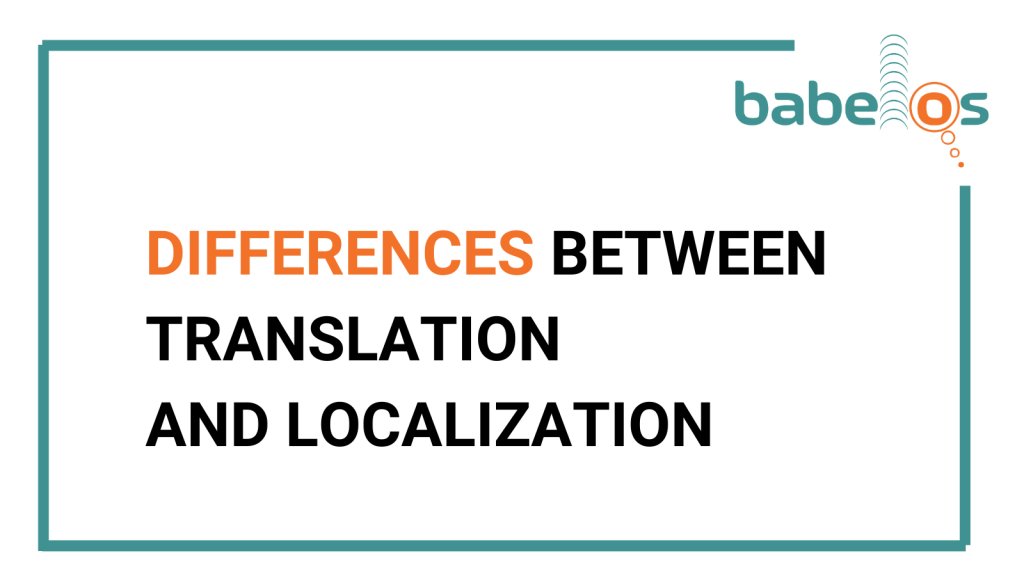If you operate your business across international boundaries or you are looking to expand globally, communicating with your clients/customers in the language and way that they understand is key to business success. This is why you will need translation and/or localization services. Most individuals in business circles assume translation and localization are one and the same term, there are distinct differences and knowing them will help you make informed decisions when the need arises.

Brief definitions
Translation is the process of changing a source text into a target language. In the language industry, translation is referred to as ‘t9n’.
For example, in a bilingual country like Kenya, a business may opt to have two different website versions, English and Swahili, depending on the language context. In translation, both websites will look and feel the same, language will be the only difference.
Localization is the process of translating the content according to the locale, making it culturally relevant to the target audience. In the language industry, localization is also referred to as ‘L10n’.
Instilling confidence in your potential clients/customers goes beyond offering them communication in their language, you need to account for a good user experience which takes a deeper approach and considers cultural aspects such as dialects, religion, traditional practices, customs and beliefs of the target audience.
For example, if the same business decides to expand to Uganda where English and Swahili are also official languages, beyond just serving up the same website to the Ugandans, localization is the process of adapting the content to the preference of the people within that locale.
Differences between translation and localization
Language Vs. Target Audience
Translation focuses mainly on the language. It reflects the content and style of the source text onto the target language.
As long as the literal meaning in language A is delivered accurately in language B, translation would have occurred.
Localization goes beyond translation and focuses on the target audience, culturally adapting the content to the locale.
To use an example almost everyone can easily relate to, English is a language spoken in the United States and in the United Kingdom, however, there are different dialects spoken in both countries and even within those countries, different dialects are spoken within regions. Localization will not adopt a one-size-fits-all-approach to marketing within both countries.
Cultural and Functional Differences
Translation is unbiased when it comes to cultural and functional differences while cultural and functional elements play an important role in localization.
Examples of cultural elements include the use of colours, idiomatic expressions, choice of brand ambassador, type of creative assets used (images, audio, video etc.)
For instance, Fiat, an Italian automobile company once damaged its brand reputation in China when it used the Hollywood Actor, Richard Gere in a commercial. The advert was offensive to the Chinese as Richard Gere is an open supporter of Tibet and the Dalai Lama both of which it has a tenuous relationship with.
If you have ever tried to make an online purchase and the currency was different from what is obtainable in your region or if you ever tried to sign up for an event and the date format (dd/mm/yy – yy/mm/dd) or time was different from what you are used to, that was a classic example of how not considering the functional elements of localization detracts from a smooth user experience.
Technical Vs. Non-Technical content
Translation is best suited for technical content which require following a standardized approach. Certain fields like medicine, finance and law for instance require a strict adherence to protocols and for these translation is ideal.
Localization is best suited for non-technical content and in marketing scenarios where going the extra mile to connect with the target audience is bound to make for a good user experience.
For instance, the delight of Lagosians in Nigeria was palpable when the company, Bestman Games took a classic board game a lot of individuals grew up playing – Monopoly – and recreated a City of Lagos edition which provided an exceptional tour of the city featuring historical monuments, famous streets, popular neighborhoods and leading brands spread across Lagos metropolis. This was one massive example of localization at its peak.
Conclusion
Although translation and localization are often used interchangeably, they are not the same thing. Translation primarily focuses on language and localization goes beyond the confines of language, focusing on cultural adaptations specific to the target audience and region. They are however mutually supportive and translation can be said to be the first step towards localization.
Now that you know the difference between translation and localization you are better equipped to make sound business decisions when expanding into global territory.
Need assistance with translating or localizing content for your business? Implementing translation and localization plans for businesses is what we do best at Babelos. Contact us today.